What alcohol sales in 13 states reveal about drinking during COVID-19
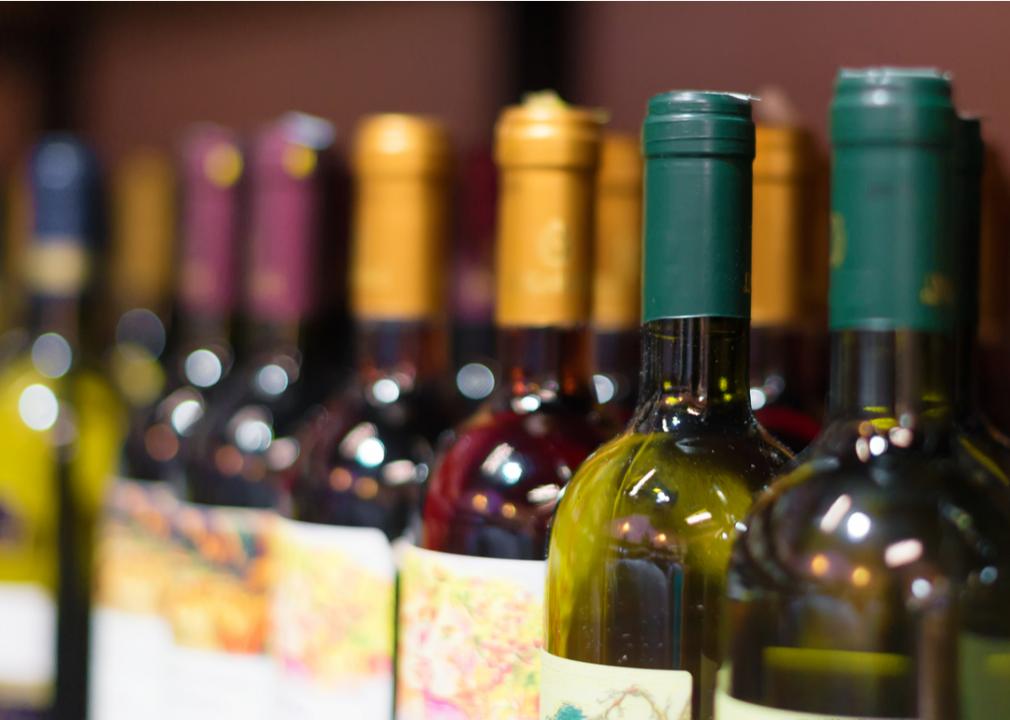
M-Production // Shutterstock
What alcohol sales in 13 states reveal about drinking during COVID-19
Around the world, the COVID-19 pandemic has had a heavy impact on all parts of life, from daily living and child care to social and alcohol behaviors. Many states across the U.S. changed their laws to allow “to-go” sales of alcoholic beverages from restaurants that weren’t previously allowed to do so. The National Institutes of Health (NIH) report that online sales of alcohol increased 477% by the end of April 2020.
In various research across the United States, people anecdotally reported feeling boredom, lack of structure in their schedules, the burden of caring for families and children, as well as job insecurities or unemployment as reasons they drank more and drank earlier or more steadily throughout the day. This may be why, of 13 states that reported data, just one had a nearly negligible decrease in alcohol sales compared with 2017–19—the others went up, with a maximum increase of more than 15%.
Citing data published by the National Institute on Alcohol Abuse and Alcoholism, Zinnia Health analyzed how alcohol sales during the first year of the pandemic compared to 2017–19 averages among 13 states where data was available. Pandemic averages include sales between March 2020 and February 2021, the most recent month available. States are ranked by the percent change in sales during the pandemic versus 2017–19.
![]()
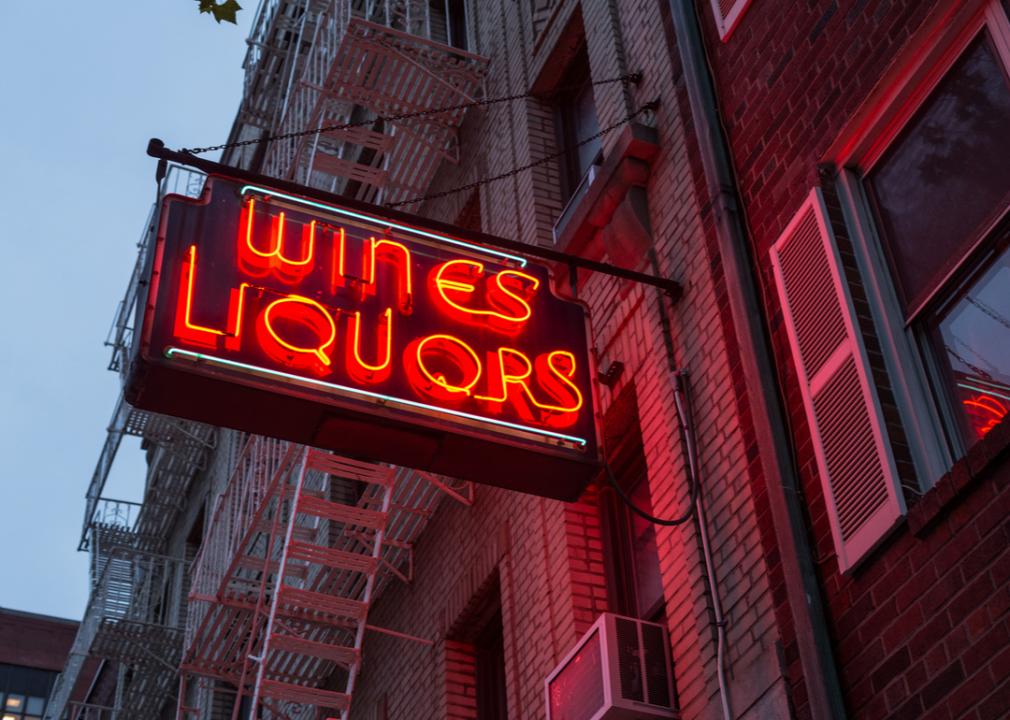
gabriel12 // Shutterstock
#13. Alaska
– All beverage sales, March 2020 to February 2021: 139,401 total gallons of pure alcohol (-.3% change from 2017-2019 average)
— Total beer sales: 839,160 gallons (50,388 total gallons of pure alcohol, -3.9% change from 2017-2019 average)
— Total spirit sales: 120,677 gallons (63,796 total gallons of pure alcohol, +4.1% change from 2017-2019 average)
— Total wine sales: 165,168 gallons (25,218 total gallons of pure alcohol, -3.0% change from 2017-2019 average)
In Alaska, total spirit sales are up while wine and beer sales are down. That’s in a state that already reported one of the highest rates of binge drinking in the nation. In response, in 2012, Alaskan public health officials started a program to screen drinkers who might have a problem and redirect them into treatment. In a 2021 survey of drinkers nationwide, surveyors found that 15% of Alaska residents admitted to drinking before noon at some point during the pandemic. That stands to reason, both because of the stress of the pandemic and because the overworked health care system is less able to do preventive screenings.
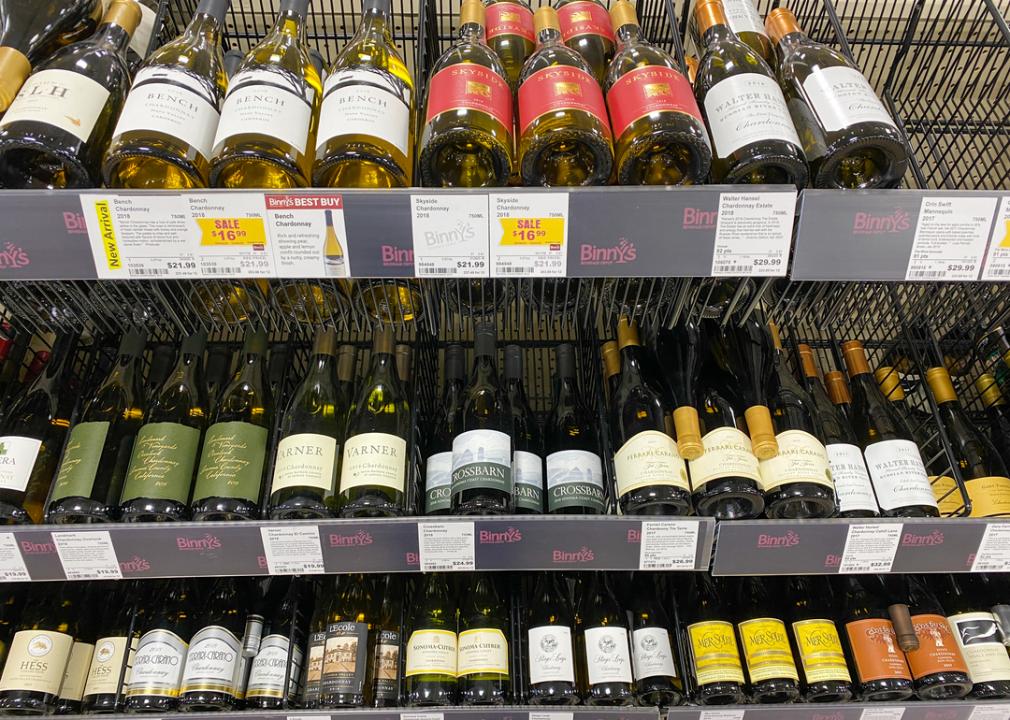
Joni Hanebutt // Shutterstock
#12. Illinois
– All beverage sales, March 2020 to February 2021: 2.11 million total gallons of pure alcohol (+.5% change from 2017-2019 average)
— Total beer sales: 15.06 million gallons (906,234 total gallons of pure alcohol, -4.7% change from 2017-2019 average)
— Total spirit sales: 1.71 million gallons (785,862 total gallons of pure alcohol, +5.0% change from 2017-2019 average)
— Total wine sales: 2.72 million gallons (414,518 total gallons of pure alcohol, +4.5% change from 2017-2019 average)
Illinois residents have increased their buying of spirits and wine, while sales of beer have fallen. That’s interesting because Illinois passed a law in 2015 allowing Illinois brewers to quadruple their output at the state’s many local breweries. One Illinois man told MSN that he found himself drinking during the day more and more until he had to slow down. That’s despite being a stay-at-home dad to two boys under five years old. He and others cited boredom as a factor in their pandemic drinking.
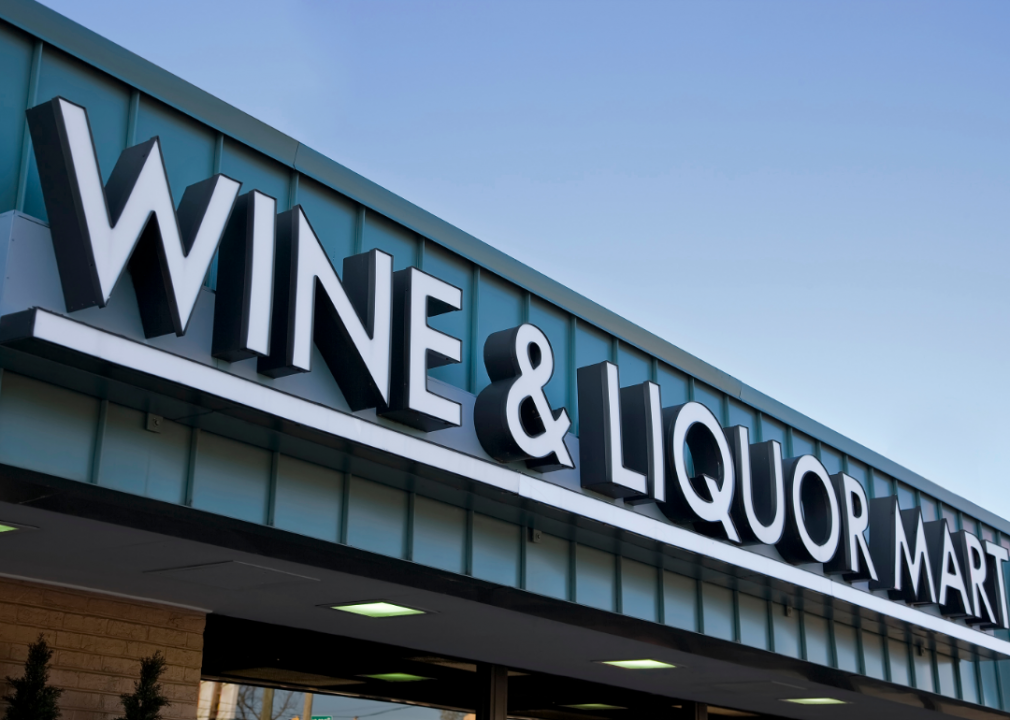
Canva
#11. Connecticut
– All beverage sales, March 2020 to February 2021: 621,027 total gallons of pure alcohol (+1.7% change from 2017-2019 average)
— Total beer sales: 3.46 million gallons (196,320 total gallons of pure alcohol, -3.4% change from 2017-2019 average)
— Total spirit sales: 697,361 gallons (279,098 total gallons of pure alcohol, +8.6% change from 2017-2019 average)
— Total wine sales: 951,592 gallons (145,609 total gallons of pure alcohol, -3.4% change from 2017-2019 average)
In Connecticut, sales of beer and wine are down, while sales of spirits increased nearly 9%. The state has a peculiar setup for drinking laws, where underage consumption isn’t against the law but underage purchasing is, meaning adults of legal age can provide alcohol to younger people. Connecticut’s pandemic drinking came to the forefront after a video surfaced of a state representative who was visibly intoxicated while giving a speech. The state’s representatives were all warned that drinking on the job was not to be tolerated. Speaker of the Connecticut House of Representatives Matt Ritter said the consequences of a hypothetical drunk driving incident could be devastating.
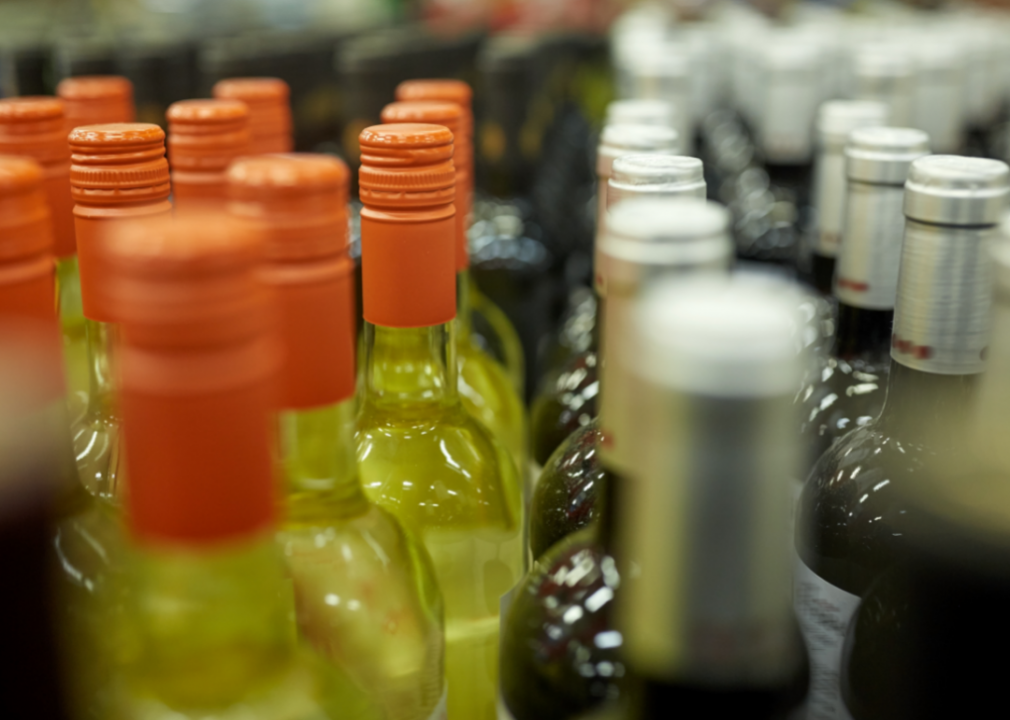
Mystic Stock Photography // Shutterstock
#10. Massachusetts
– All beverage sales, March 2020 to February 2021: 1.29 million total gallons of pure alcohol (+2.5% change from 2017-2019 average)
— Total beer sales: 8.08 million gallons (410,830 total gallons of pure alcohol, -8.9% change from 2017-2019 average)
— Total spirit sales: 1.15 million gallons (572,886 total gallons of pure alcohol, +16.3% change from 2017-2019 average)
— Total wine sales: 1.81 million gallons (301,444 total gallons of pure alcohol, -2.9% change from 2017-2019 average)
In Massachusetts, sales of beer and wine are down, while sales of spirits have soared 16%. In October, Boston 25 News reported drinking among women rose 41% during the pandemic, raising special concerns about drinking pregnant women. A doctor explained the common lore that “a glass of wine” is okay later in pregnancy can be misleading, as doing so could cause harmful effects to fetuses due to even the smallest consumption of alcohol. Because of this, experts in the state fear the pandemic may lead to a wave of new cases of fetal alcohol syndrome. Worse, they say there’s no way to know until the effects come to light several years later.
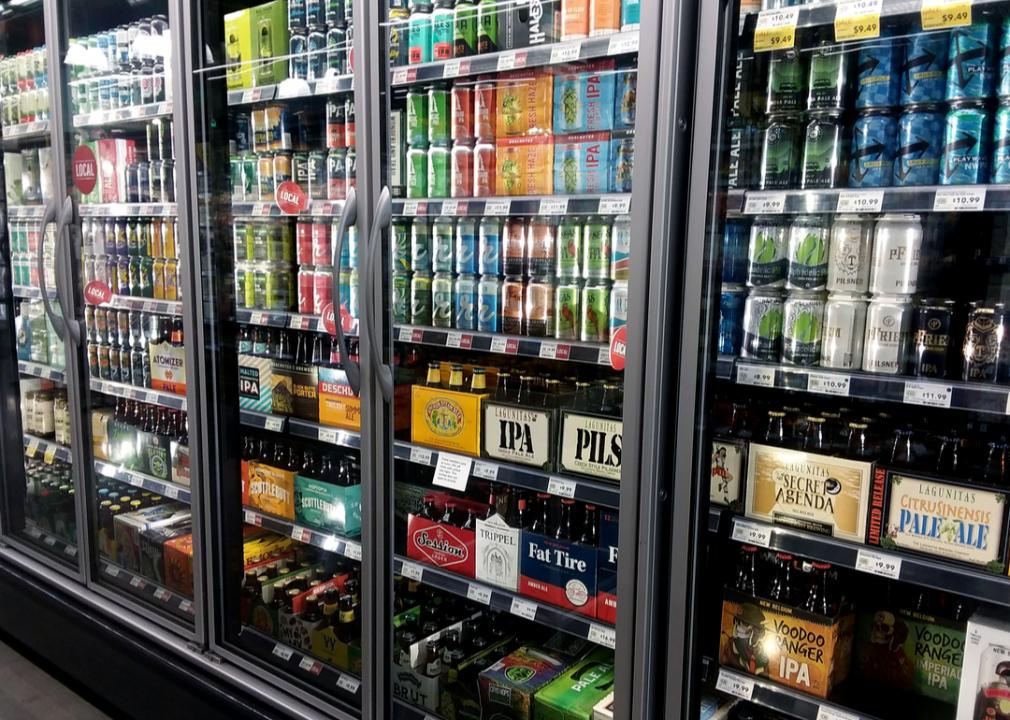
Colleen Michaels // Shutterstock
#9. Minnesota
– All beverage sales, March 2020 to February 2021: 1.11 million total gallons of pure alcohol (+3.2% change from 2017-2019 average)
— Total beer sales: 8.76 million gallons (432,309 total gallons of pure alcohol, -1.3% change from 2017-2019 average)
— Total spirit sales: 1.03 million gallons (505,639 total gallons of pure alcohol, +8.3% change from 2017-2019 average)
— Total wine sales: 1.08 million gallons (169,761 total gallons of pure alcohol, +.5% change from 2017-2019 average)
In Minnesota, sales of beer and wine were stable, while sales of liquor rose 8%. An October 2021 report found that Minnesota has one of the 50 “drunkest” counties in the U.S., with 27.2% of adults admitting to binge drinking in the last 30 days. (Forty-one of the others are in neighboring Wisconsin.) In 2019, Minnesota overall had one of the highest reported rates of binge drinking in the nation at 20.7% of residents. That’s out of just 60.5% of the state’s residents who reported drinking alcohol at all.
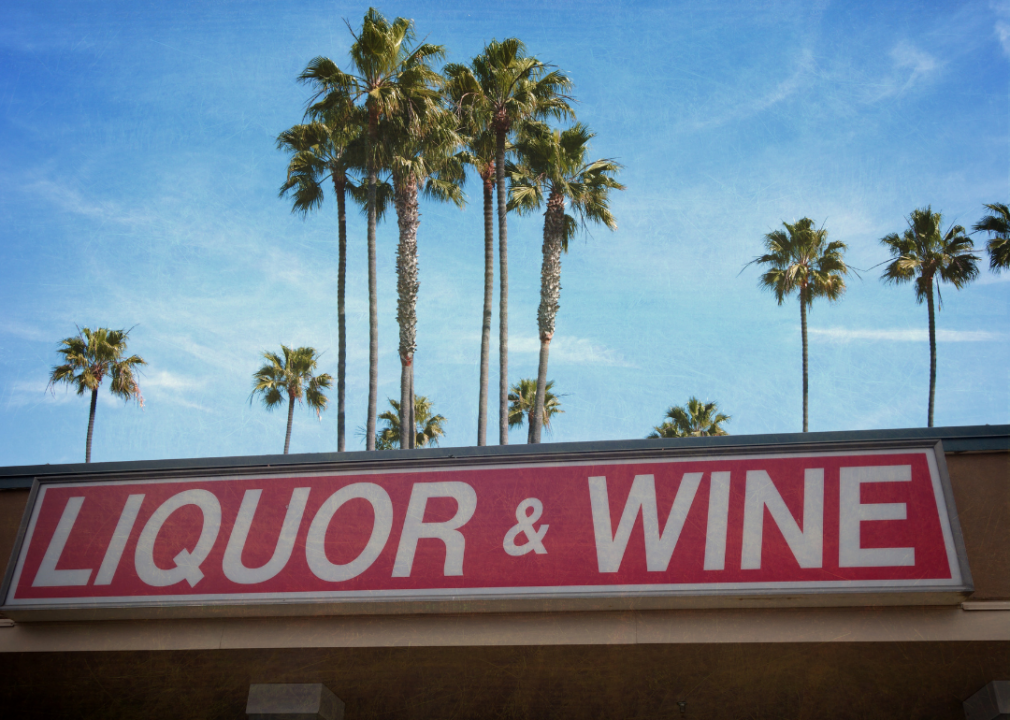
Canva
#8. Florida
– All beverage sales, March 2020 to February 2021: 4.22 million total gallons of pure alcohol (+3.9% change from 2017-2019 average)
— Total beer sales: 31.83 million gallons (1.58 million total gallons of pure alcohol, -1.6% change from 2017-2019 average)
— Total spirit sales: 4.38 million gallons (1.78 million total gallons of pure alcohol, +11.1% change from 2017-2019 average)
— Total wine sales: 6.94 million gallons (859,618 total gallons of pure alcohol, +.7% change from 2017-2019 average)
In Florida, sales of beer and wine were relatively stable, while sales of spirits increased 11%. That could be because the state legislature changed Florida law to allow alcohol with takeout orders as a way to help restaurants and bars stanch their pandemic losses. The city of Gainesville, where the University of Florida is located, has allowed public drinking during the pandemic. That move is likely to accommodate everyone’s move to safer outdoor socializing. City officials said the previous law was more of a nuisance because the body of law still forbids drunk and disorderly conduct—why not let responsible adults have a drink outside?

Canva
#7. North Dakota
– All beverage sales, March 2020 to February 2021: 170,041 total gallons of pure alcohol (+4.2% change from 2017-2019 average)
— Total beer sales: 1.58 million gallons (77,265 total gallons of pure alcohol, .0% change from 2017-2019 average)
— Total spirit sales: 159,704 gallons (75,423 total gallons of pure alcohol, +9.8% change from 2017-2019 average)
— Total wine sales: 113,252 gallons (17,353 total gallons of pure alcohol, +.6% change from 2017-2019 average)
In North Dakota, sales of beer and wine stayed about the same, while sales of liquor jumped nearly 10%. That’s in a state that already had high rates of alcohol abuse behaviors. In 2015, North Dakota ranked first in the nation for binge drinking rates. Experts say things have only gotten worse during the pandemic. The Dickinson Press reports that liquor stores across the state have had their best sales ever.
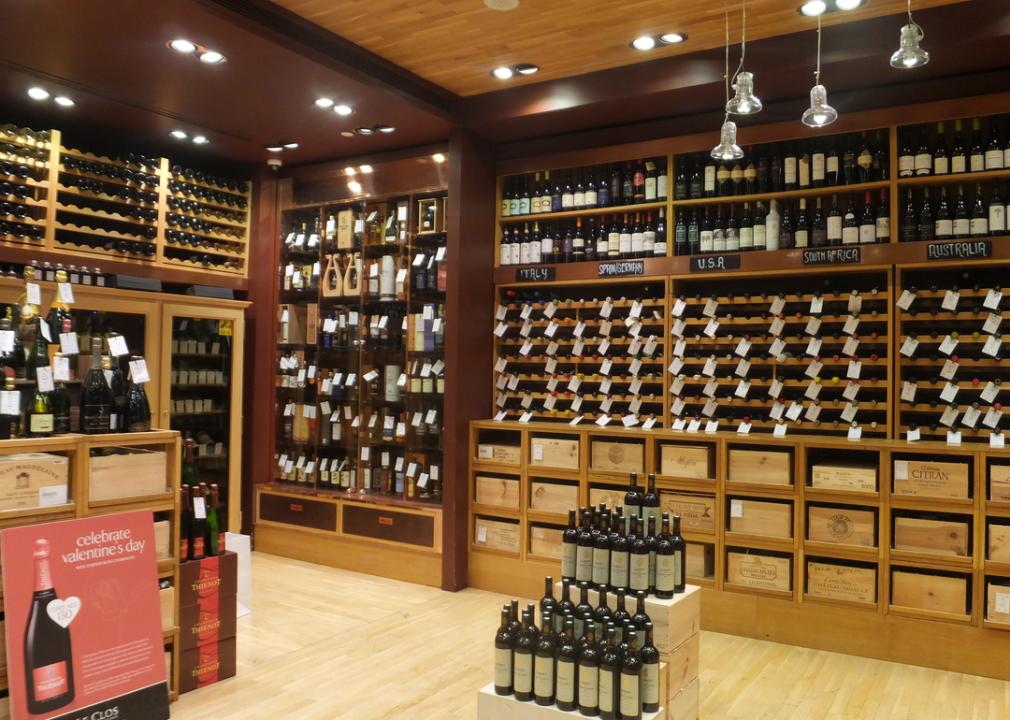
Ritu Manoj Jethani // Shutterstock
#6. Colorado
– All beverage sales, March 2020 to February 2021: 1.21 million total gallons of pure alcohol (+6.7% change from 2017-2019 average)
— Total beer sales: 8.46 million gallons (458,900 total gallons of pure alcohol, +.0% change from 2017-2019 average)
— Total spirit sales: 1.18 million gallons (544,048 total gallons of pure alcohol, +15.0% change from 2017-2019 average)
— Total wine sales: 1.47 million gallons (205,192 total gallons of pure alcohol, +2.5% change from 2017-2019 average)
In Colorado, sales of beer stayed steady, while wine was up slightly and spirits were up fully 15%. In a June 2021 survey, 17% of Coloradans admitted to day drinking during the pandemic. Fifteen percent admitted to using special occasions as an excuse to drink during the day. Colorado has a thriving industry of craft breweries that were hit especially hard by the pandemic, with examples like beer makers who had never bottled their beers except for special refillable aluminum containers called crowlers. These makers pivoted to canning beers for sale directly to customers and also through liquor stores.
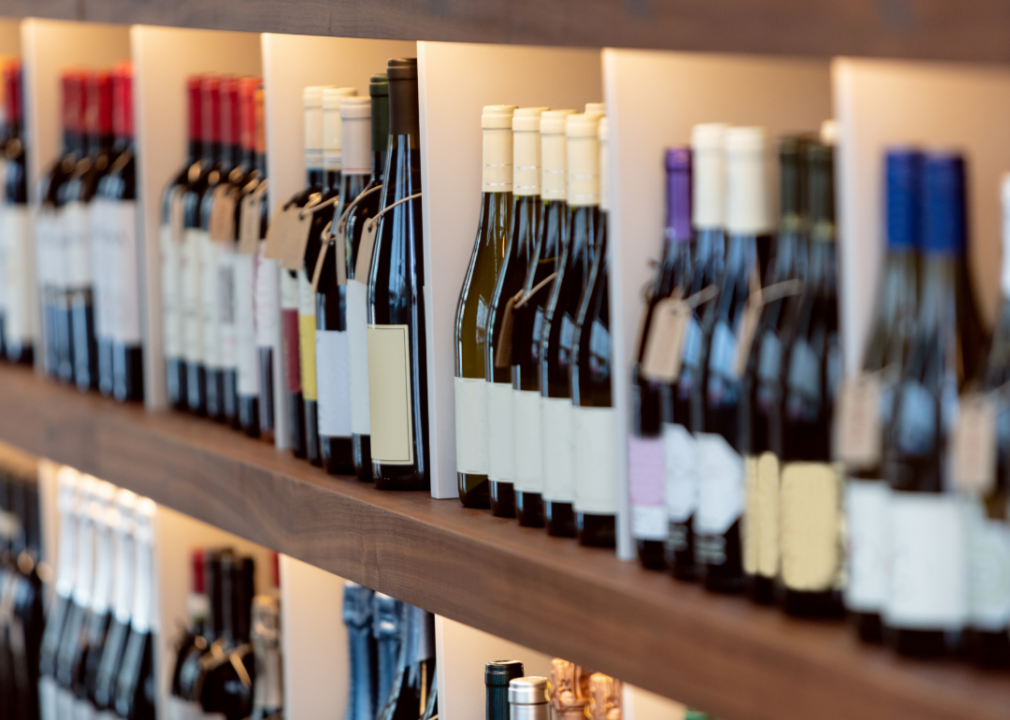
Canva
#5. Texas
– All beverage sales, March 2020 to February 2021: 4.76 million total gallons of pure alcohol (+7.2% change from 2017-2019 average)
— Total beer sales: 40.23 million gallons (2.43 million total gallons of pure alcohol, +2.1% change from 2017-2019 average)
— Total spirit sales: 4.06 million gallons (1.64 million total gallons of pure alcohol, +16.8% change from 2017-2019 average)
— Total wine sales: 4.36 million gallons (692,717 total gallons of pure alcohol, +5.0% change from 2017-2019 average)
In Texas, sales of beer and wine rose modestly, while sales of spirits rose nearly 17%. Local TV reported that alcohol use rose most sharply in Texas compared with the rest of the United States. That’s in a state that already has a prominent alcohol culture. In an annual survey of secondary school students, researchers found that nearly 60% of 12th grade students admitted to drinking beer at some point. That’s the same proportion of all adults who use alcohol in the state of Minnesota.
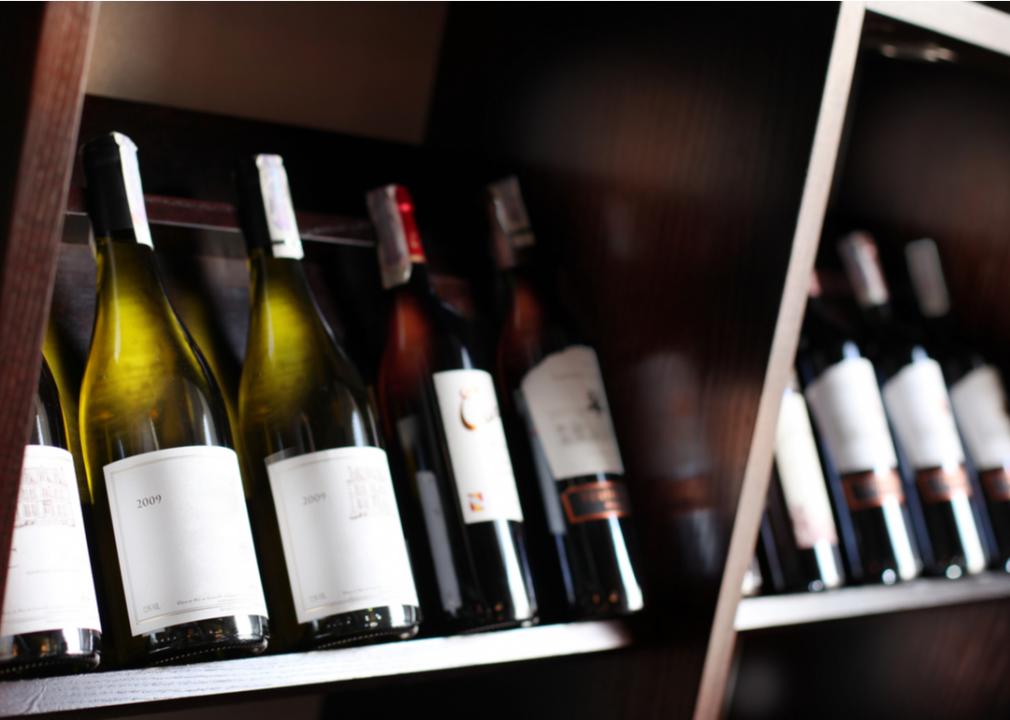
Valentyn Volkov // Shutterstock
#4. Missouri
– All beverage sales, March 2020 to February 2021: 1.15 million total gallons of pure alcohol (+7.5% change from 2017-2019 average)
— Total beer sales: 8.41 million gallons (463,304 total gallons of pure alcohol, -1.5% change from 2017-2019 average)
— Total spirit sales: 1.10 million gallons (523,117 total gallons of pure alcohol, +18.6% change from 2017-2019 average)
— Total wine sales: 1.09 million gallons (166,360 total gallons of pure alcohol, +3.3% change from 2017-2019 average)
In Missouri, sales of beer and wine stayed almost the same, while sales of liquor increased nearly 19%. The state was one of several to legalize “to-go” alcohol sales as a way to help businesses cope with the pandemic and lockdown in 2020. Many states viewed “to-go” alcohol laws as a way to let restaurants and bars sustain sales. These beverages tend to be high-profit items compared with food. In Missouri, it’s illegal for those under 21 to even possess alcohol, let alone to purchase or consume it.
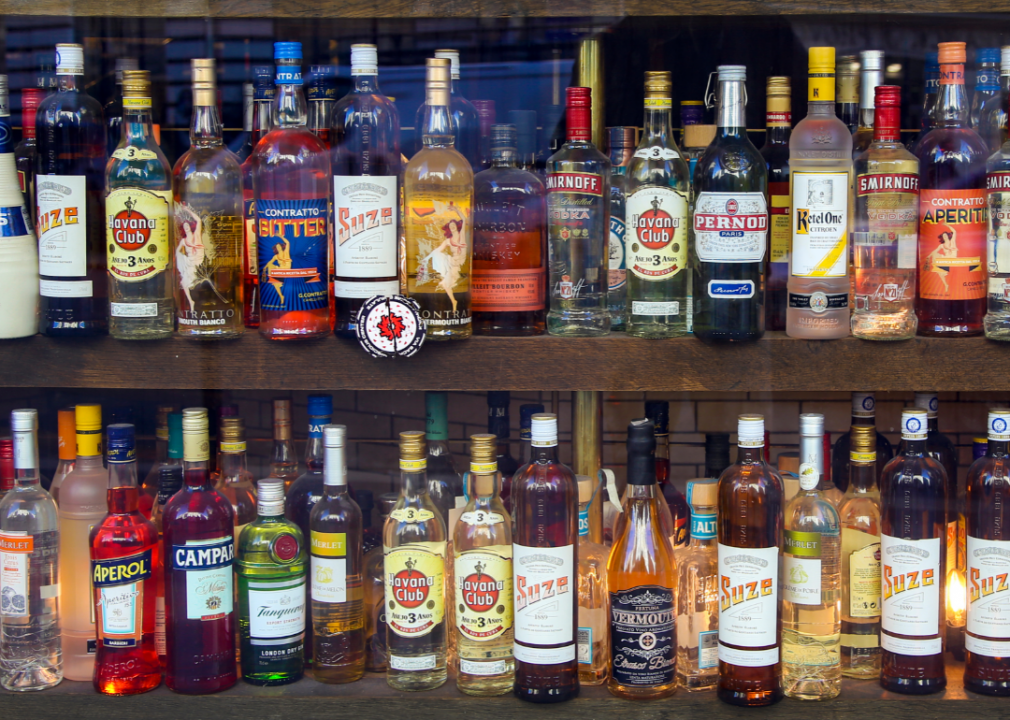
Rosemarie Mosteller // Shutterstock
#3. Kentucky
– All beverage sales, March 2020 to February 2021: 666,790 total gallons of pure alcohol (+9.2% change from 2017-2019 average)
— Total beer sales: 6.53 million gallons (287,094 total gallons of pure alcohol, +1.6% change from 2017-2019 average)
— Total spirit sales: 651,480 gallons (304,629 total gallons of pure alcohol, +16.7% change from 2017-2019 average)
— Total wine sales: 493,214 gallons (75,067 total gallons of pure alcohol, +12.3% change from 2017-2019 average)
In Kentucky, sales of all alcohol are up, but especially spirits, at a nearly 17% increase. Part of that could be because, at the start of the pandemic, Kentucky rapidly passed a law allowing alcohol to be shipped directly to consumers. This meant producers in the state were able to apply for licenses to ship their products, which also likely helped the state’s brewers and distillers to stave off the worst effects of the pandemic on their businesses. Kentuckian Brandon Dowdy told MSN that he’d started drinking spirits again after nearly a decade without them. He cited social distancing conditions and work furloughs as reasons he’d started drinking more.
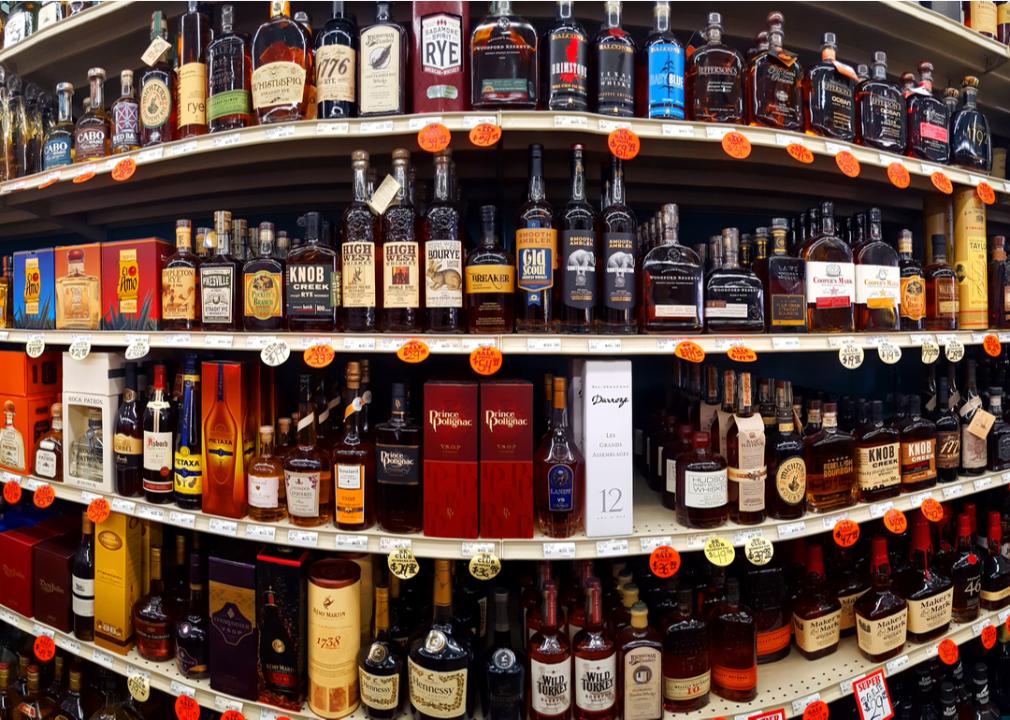
Mihai_Andritoiu // Shutterstock
#2. Tennessee
– All beverage sales, March 2020 to February 2021: 1.12 million total gallons of pure alcohol (+10.1% change from 2017-2019 average)
— Total beer sales: 9.77 million gallons (471,792 total gallons of pure alcohol, +1.7% change from 2017-2019 average)
— Total spirit sales: 957,007 gallons (474,221 total gallons of pure alcohol, +19.3% change from 2017-2019 average)
— Total wine sales: 1.16 million gallons (169,099 total gallons of pure alcohol, +11.5% change from 2017-2019 average)
In Tennessee, sales of beer stayed steady, while sales of wine and liquor exploded by over 11% and 19%, respectively. The state passed a law to allow “to-go” sales of liquor for restaurants, which often make a lot of their money on these high-margin items. In Tennessee, restaurants may begin selling alcoholic beverages at 8 a.m. on Monday through Saturday. On Sunday, the time shifts back to 10 a.m. Those seeking their 8 a.m. Bloody Mary on the day of rest will have to wait a little bit longer—or mix one up at home.
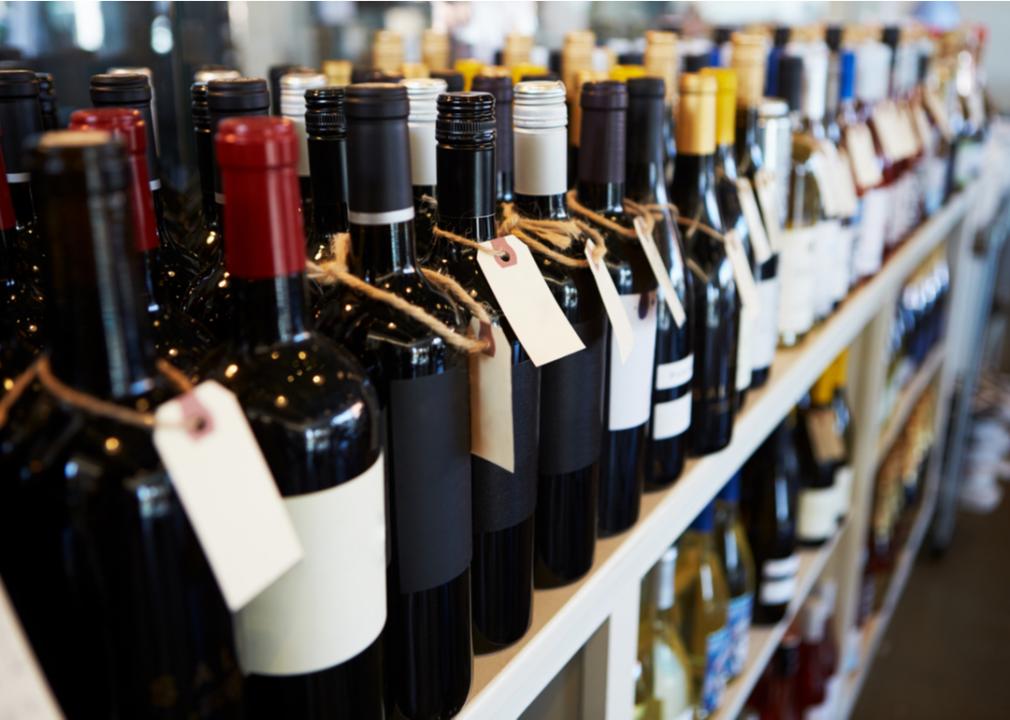
Monkey Business Images // Shutterstock
#1. Delaware
– All beverage sales, March 2020 to February 2021: 277,092 total gallons of pure alcohol (+15.3% change from 2017-2019 average)
— Total beer sales: 1.36 million gallons (77,511 total gallons of pure alcohol, +1.0% change from 2017-2019 average)
— Total spirit sales: 291,692 gallons (146,393 total gallons of pure alcohol, +27.5% change from 2017-2019 average)
— Total wine sales: 373,942 gallons (53,189 total gallons of pure alcohol, +9.2% change from 2017-2019 average)
In Delaware, beer sales stayed constant while sales of wine and spirits increased over 9% and 27% respectively. With just under a million residents, it doesn’t take much to make a relatively huge change—compare Delaware’s 291,692 gallons of spirits with Texas’s 4.06 million. Local news in Delaware reports that the spike in drinking during the pandemic has led to an increased demand for liver transplants. All that said, Delaware had just 427 driving under the influence (DUI) arrests in 2018, compared with more than 125,000 in California that year.
A rise in sales may also be attributed to Pennsylvania residents crossing state lines to purchase alcohol. Pennsylvania closed all state-run liquor stores on March 16, 2020, leading to many Pennsylvanians to buy liquor in Delaware, Ohio, and New Jersey. Delaware also does not have sales tax on alcohol, which means crossing state lines to buy liquor had money-saving advantages, too.
This story originally appeared on Zinnia Health
and was produced and distributed in partnership with Stacker Studio.



